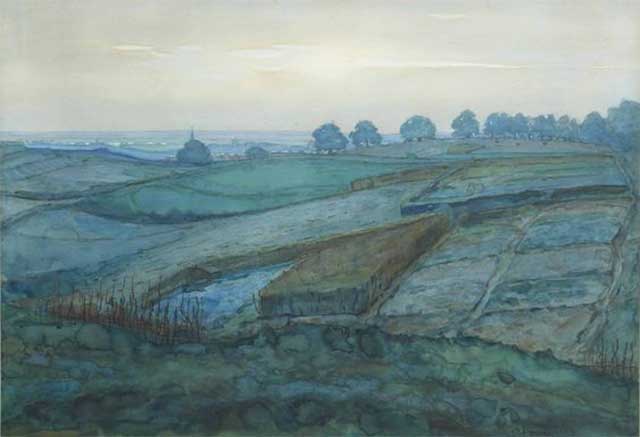
From Representation to Abstraction—How Mondrian Redefined Reality in Art
Mondrian Beyond the Grid: Understanding Neo-Plasticism and Its Deeper Meaning
When we think of Mondrian, most of us immediately picture his iconic abstract compositions—grids of black lines intersecting fields of red, blue, and yellow, balanced with bars of white and gray. These later works, known as Neo-Plasticism, became synonymous with his artistic legacy.
However, to fully appreciate Mondrian’s vision, it’s essential to understand the philosophy behind his radical approach. Traditionally, all art that represents three-dimensional reality is referred to as Plastic Art. Mondrian, however, sought to break away from the illusion of depth and instead convey what he believed to be the essence of reality—pure, universal harmony. With Neo-Plasticism, he reduced form to its most fundamental elements, using only horizontal and vertical lines to create a dynamic equilibrium, free from the constraints of naturalistic representation. In doing so, Mondrian redefined artistic expression, proving that true reality could exist beyond the visible world.
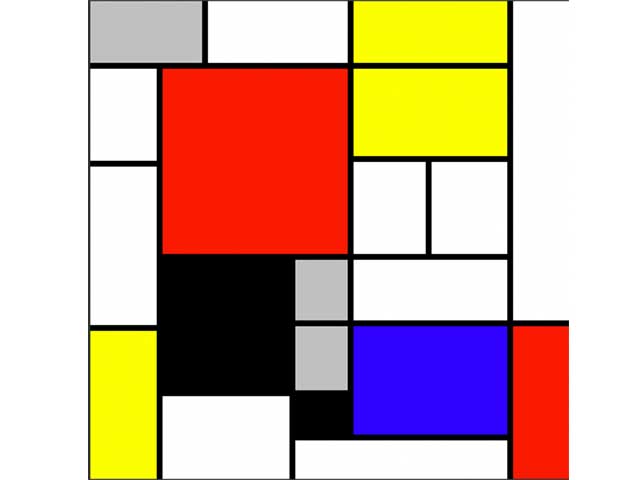
Mondrian’s Artistic Evolution: The Journey to Broadway Boogie Woogie
Mondrian didn’t simply wake up one morning in 1943 and decide to paint Broadway Boogie Woogie. His most iconic works—the striking compositions of red, blue, and yellow squares framed by black lines—were not the product of a sudden revelation but rather the result of years of artistic exploration and transformation.
What many people fail to realize is that Mondrian’s signature style emerged through a gradual and deliberate aesthetic evolution. He began his career with traditional landscapes and impressionistic scenes before moving toward Cubism, which laid the foundation for his revolutionary approach to abstraction. Over time, he refined his vision, stripping away depth, perspective, and representational elements to focus on the purest forms of balance and harmony. Neo-Plasticism, his signature movement, was a carefully developed philosophy rather than a spontaneous shift. By the time he painted Broadway Boogie Woogie, his style had reached its ultimate expression—dynamic, rhythmic, and deeply connected to the energy of modern life.
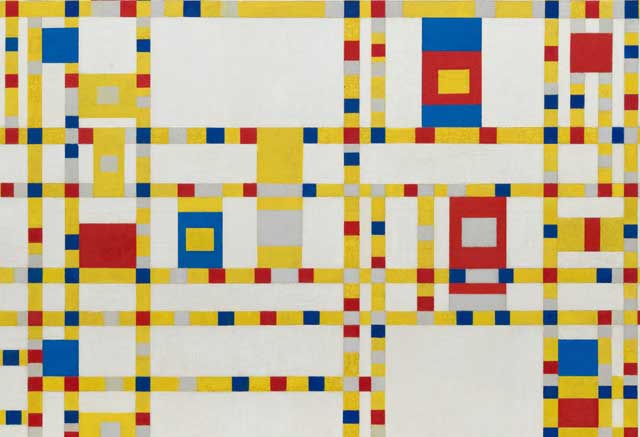
Mondrian’s Artistic Transformation: From Nature to Pure Abstraction
Piet Mondrian’s prolific body of work reveals the journey of an artist who evolved from figurative representation to pure abstraction. In 1905, he began painting landscapes and figures, experimenting with different styles, color palettes, and line work. Rather than adhering to a single approach, he often worked in series, creating multiple versions of the same subject with subtle variations.
Through this process, Mondrian developed a keen awareness of the underlying universal patterns present in nature. His exploration of form and composition led him to uncover new ways of interpreting the world—moving beyond representation to focus on essential structures and rhythms. This artistic evolution ultimately guided him toward Neo-Plasticism, where he sought to express harmony and balance through geometric abstraction, reducing art to its most fundamental elements.
It was Mondrian’s belief there is an underlying
equilibrium that connects all beings.
If the universal is the essential, then it is the basis of all life and art.
Recognizing and uniting with the universal therefore gives us the greatest
aesthetic satisfaction, the greatest emotion of beauty.” – Mondrian
Mondrian and the Changing Art World: From Imitation to Innovation
Piet Mondrian was born in the Netherlands in 1872—the same year Claude Monet painted Impression, Sunrise, a work that would ignite one of the most transformative movements in art since the Renaissance. As he grew, the art world around him was rapidly evolving. By the time he was 12, Georges Seurat had introduced Pointillism, and six years later, Vincent van Gogh’s tragic end marked the culmination of an intensely expressive approach to painting. Just over a decade later, Pablo Picasso shattered artistic conventions with Les Demoiselles d’Avignon, forever altering how artists perceived form and space.
Surrounded by the radical shifts of Post-Impressionism and emerging modernist movements, young Mondrian initially sought to capture the world with accuracy. However, upon graduating from art school, he felt compelled to move beyond mere representation. Rather than simply depicting nature, he sought to express its deeper essence—intensifying the quality of light and exploring the emotional power of color. This desire for something more profound set him on a path that would ultimately lead to his revolutionary abstraction.
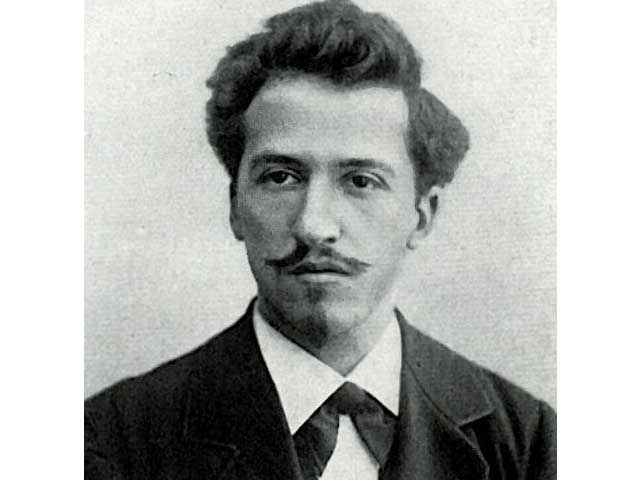
A Personal Journey with Mondrian: Discovering the Beauty of His Early Work
My fascination with Mondrian’s early work began when I was an art student in Florence. Riding the bus across town to painting classes, I remember spotting posters for an exhibition showcasing his early paintings—particularly his trees. I was intrigued. In my art history studies, Mondrian’s work was almost always reduced to his later geometric compositions, with little mention of his artistic evolution. Curious to learn more, I jotted down the gallery address and, one Saturday afternoon, set off to find it. I don’t even recall exactly where it was, but I do remember the pride I felt in navigating Florence successfully on my own!
Stepping into that small gallery, I was mesmerized. Mondrian’s early paintings, especially his trees, were captivating. His use of light and color, the intricate patterns of twisting branches, and the way his brushwork revealed an obsession with structure and rhythm all resonated deeply with me. You could almost trace his artistic transformation within those forms—seeing how, over time, he distilled nature into its purest elements, eventually developing the radical abstraction of De Stijl.
Of course, I couldn’t leave without a souvenir. I bought a poster and carried it back to my Florentine apartment, and for years, that image followed me—tacked onto the walls of every place I lived. It became a symbol of inspiration and growth, a reminder that, just like artists, we all evolve over time.
For the joy of it, I share Mondrian’s early works here today. I find them incredibly beautiful, not just as precursors to his famous style but as stand-alone masterpieces. They are the seeds of inspiration—roots that grew into something extraordinary, much like the trees he painted so elegantly.
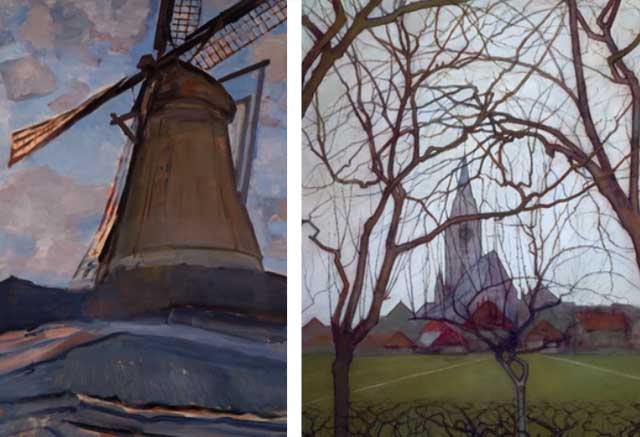
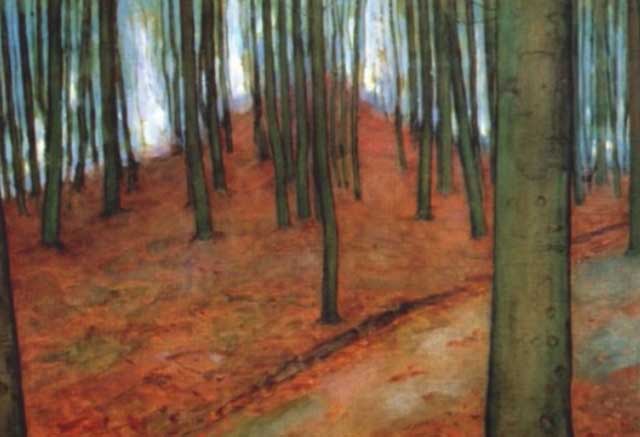
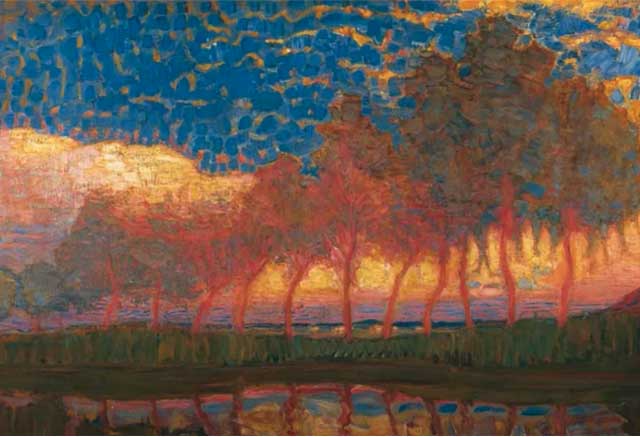
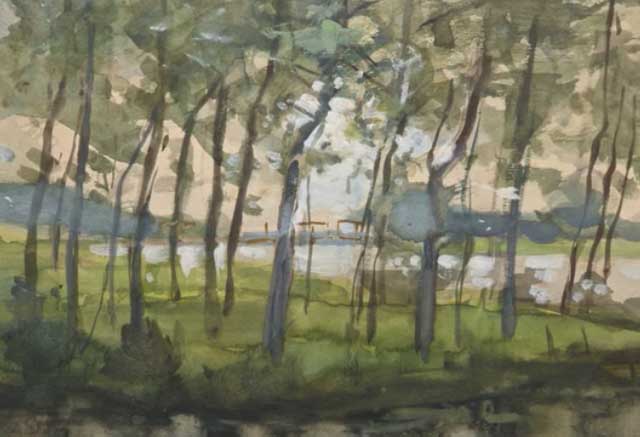
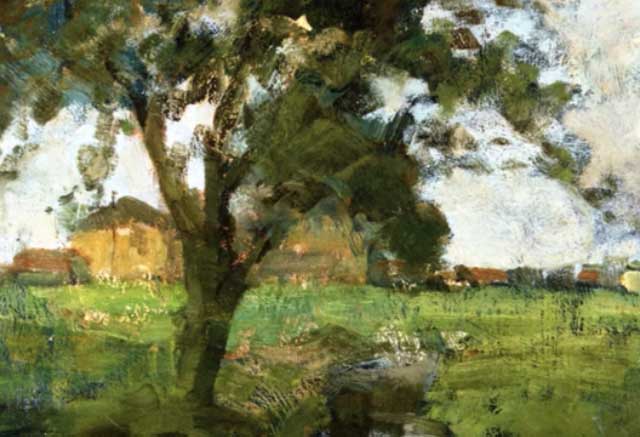
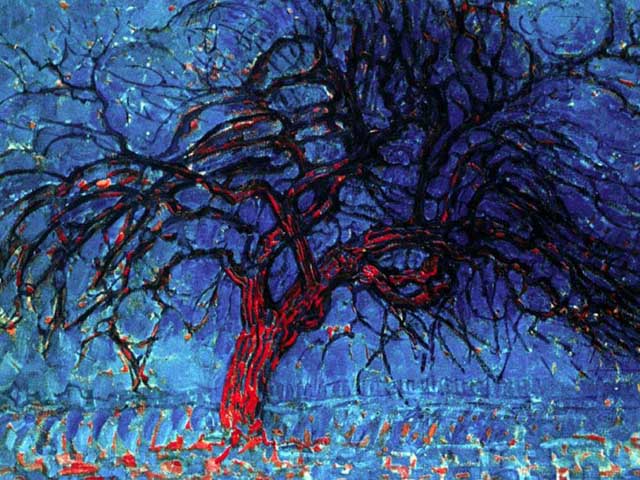
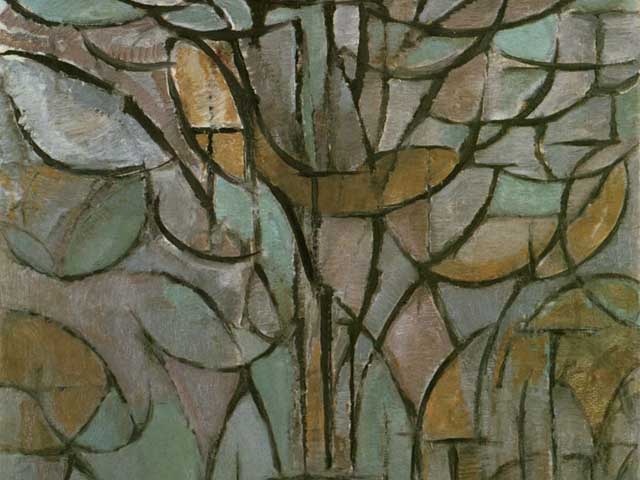
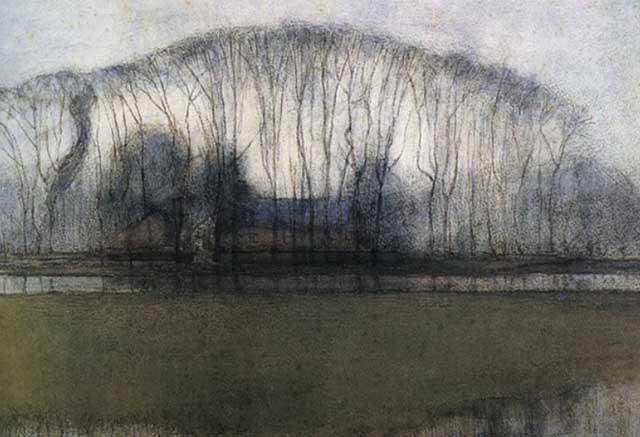
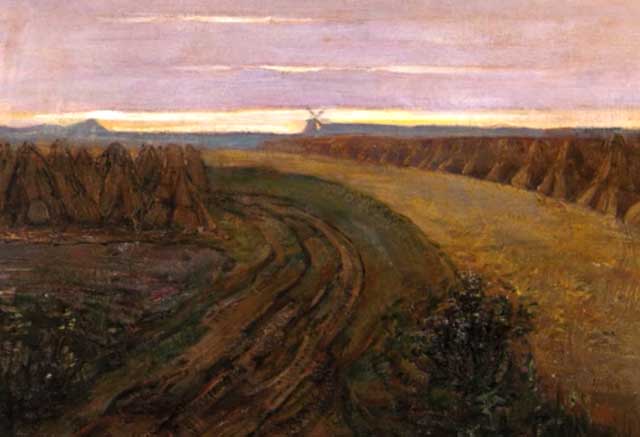
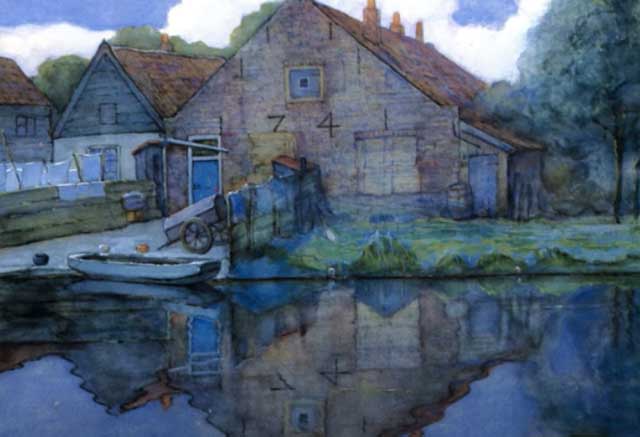
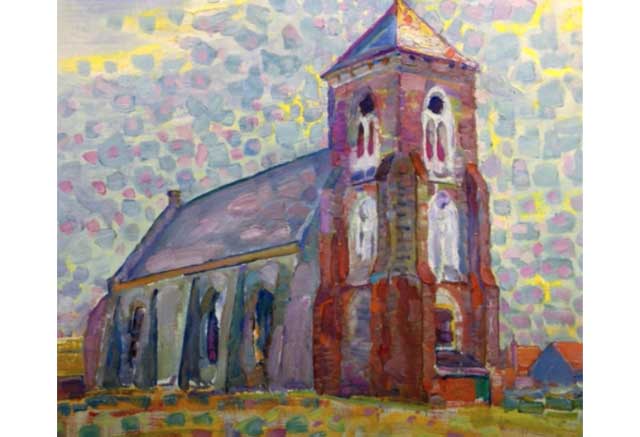
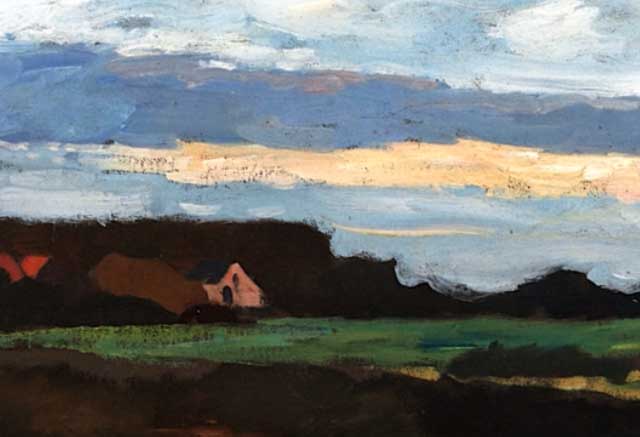
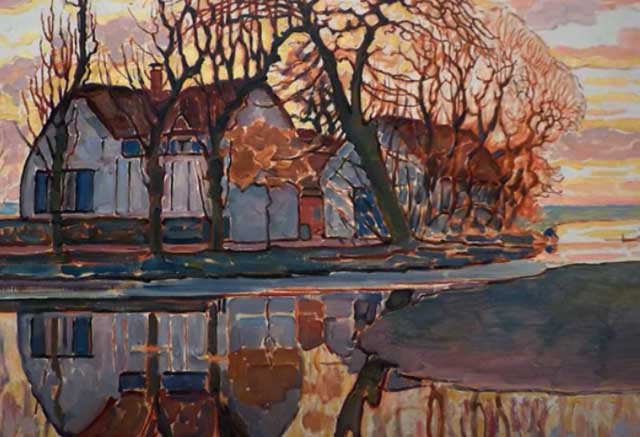
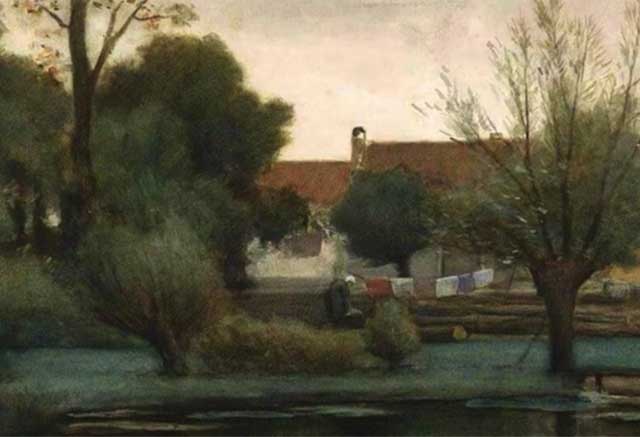
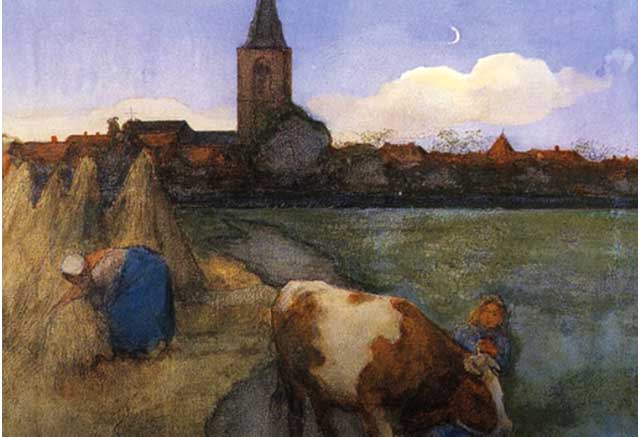
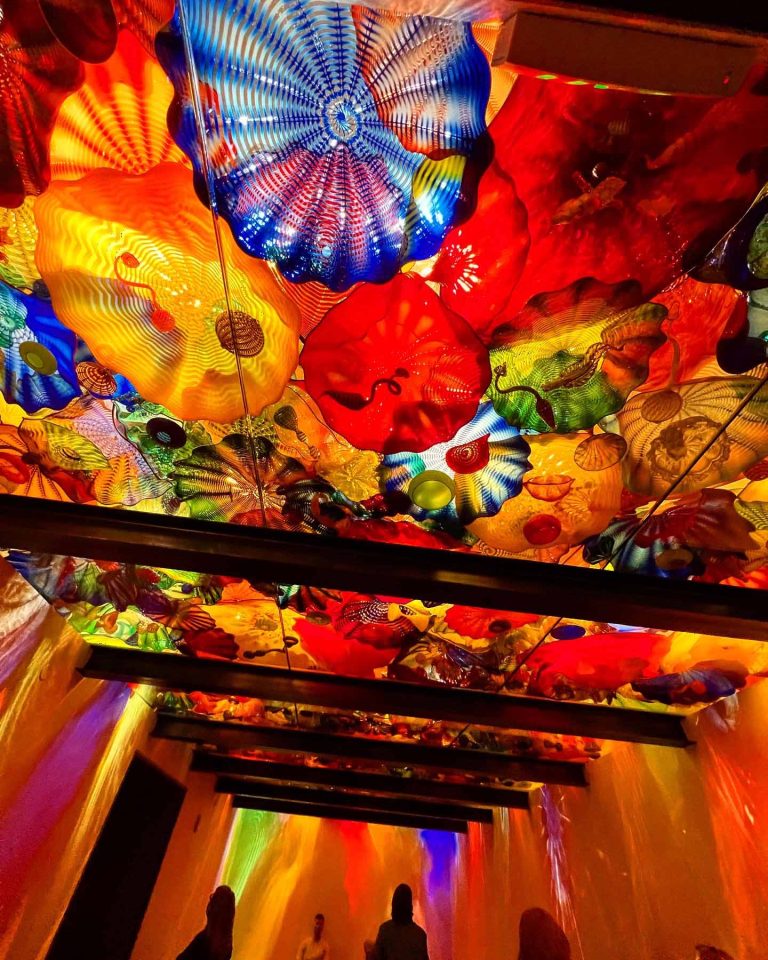
I enjoyed your article and I agree that there is not enough display surrounding Mondrian’s early work particularly his beginnings of reduction.